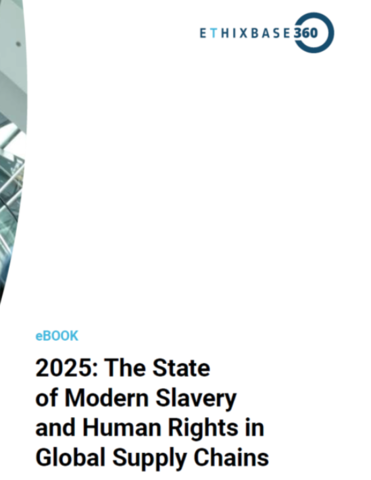Frontline innovation: crowdsourcing employee inspiration

Mark Ratekin at Forsta describes how to use crowdsourcing to harness your workforce’s voice
As organisational leaders, we often spend time racking our brains to find ways to grow, innovate and provide added value to our clients and stakeholders. We research trends, adapt business models and test out new processes to maximise efficiency, profit and human experience for employees and customers alike.
However, many organisations today could be missing the most valuable source of innovation right under their noses: crowdsourced ideas from their own workforce.
While frontline employees are fully immersed in the day-to-day activity of the business, supervisors are only aware of 74% of frontline issues, and middle management just 9%. This exposure makes it incredibly important for leaders to listen to ideas from employees throughout the business, yet many are only scratching the surface when it comes to tapping into the wisdom of their full teams. In doing so, they could be missing out on key business opportunities.
Crowdsourcing can act as an asynchronous version of the whiteboard present in every brainstorm meeting, supporting transparent, collaborative ideation across time zones. Done right, it can have a real impact on both the business and its staff.
Employee crowdsourcing naturally benefits customers too, as they reap the benefits of improved customer service programs, enhanced features or solutions, and other ideas that have come to light. Crowdsourcing itself is not a new concept, but the ways in which business are leveraging it is fast growing as modern technologies are bringing new life to proven processes.
So, how can companies leverage crowdsourcing as an operational tool – rather than a ‘nice-to-have’ – to surface a steady stream of ideas that translate into meaningful business opportunities?
Operationalising Ideation
Ideas for change are a by-product of experience, and employees of every level have some notion of what could make their job better, and their life easier. The premise of collecting these ideas is simple, but the key to successful employee crowdsourcing is how you operationalise collating so many voices effectively.
Historically, we have gathered employee perspectives in surveys in which we ask employees to put themselves in the customer’s shoes and provide feedback based on how they feel the customer would respond. This approach provides metrics, but it’s often guesswork. As a result, it can still fall short of capturing the full truth of customer experience.
Furthermore, it often doesn’t translate to action, relegating findings to corporate trivia – interesting information of questionable value. Moreover, the ideas provided in this method are isolated, lacking the collaboration needed to gather actionable insight.
Try using this eight-step process that works to maximise opportunities – by using and adapting this system, your business, too, can harness the power of employee ideas.
- Identify the issue area: First, define the topics that you would like your employees to feedback on. Consider what your customers are telling you – via key driver analytics - about areas of focus for improvements to the customer experience and use this to inform the project.
- Build the framework: Next, create an idea hub to manage your campaign. It’s important to build an easy-to-use, reusable framework to ensure that the crowdsourcing exercise is consistent and repeatable.
- Gather the ideas: Describe the goal of the campaign in detail, and incentivise your employees to submit open, shared ideas that can linked together to form a cohesive whole. It is important to let this phase of ideation run for a good amount of time – we have found that two weeks works well – in which you can periodically nudge your employees to contribute.
- Use the crowd to identify the best ideas: Crowdsourcing should not just be used to gather ideas, but to pressure test them. Re-engaging your employees to evaluate the ideas in a way that forces trade-offs will naturally engage your workforce to prioritise the most pertinent insights.
- Assess feasibility: Let’s be honest – not all great ideas are feasible. Sometimes, budgetary constraints exist, other times there are technological limitations or reluctance to adopt that prevent great ideas from taking root. Having the crowd evaluate the feasibility of ideas will ensure that the absolute best – and most workable – solutions will emerge.
- Build the action team(s): This stage is hugely important, as it represents the first step into taking action on your findings. Commission a team (or teams) to interrogate and attack ideas, allocating the resources necessary to develop the best solution. Empower the team to bring in resources as needed to develop the best solution.
Assigning an executive champion is important to help navigate roadblocks during the solution development process. Empowerment here is key; giving your workforce the responsibility to take charge of their own ideas can push them to maximise engagement.
- Implement the solution(s): Once the best solutions are identified by employees, it is then time to act. Tracking progress against the plan – and its corresponding ROI – not only makes for a more efficient process but also provides a repository of best practices.
- Celebrate the victories: At their core, these programs are highly specialised change management programs, and as reinforced in Kotter’s 8-stage change management model, quick wins can be used as a catalyst to drive further success. Taking a step back to celebrate wins can be an important aspect of weaving the notion of customer centricity into the DNA of the organization.
When we look across these eight steps, it is clear that we are using a variety of tools (survey data/analytics, employee ideation/collaboration via crowdsourcing, cross functional action teams, etc) to drive improvement. At Forsta, we call this process Frontline Innovation – that is, tapping into the collective wisdom of customers and employees alike to create business-impacting change.
Frontline innovation can be a catalyst to gather intelligent data, provide meaningful change and drive business outcomes. By bringing your employees into the decision-making process, you operationalise the best ideas from those who have the most exposure to your organisation – and also a vested interest in its success. By making use of modern crowdsourcing technologies, you can benefit from the collective wisdom and power of your employees to drive substantive business outcomes.
The practical results of connecting the dots between employee and customer experience can be game-changing for your business. The relationship between CX and EX is symbiotic, improving one has a knock-on effect on the other, and the core values behind the link can be traced back to research from over 25 years ago.
Employees and customers often have interconnected pain points, meaning by attending to one group you eliminate issues across the board. Moreover, employees both see their contribution to success and feel heard and valued, increasing morale and retention as a result, something that is becoming increasingly vital in today’s market.
This retention doesn’t just apply to your employees – by promoting a more engaged workforce you deliver a better customer experience, increasing repeat business and even cutting costs on inefficient customer-serving processes.
Bringing your employees into your decision-making is a win-win scenario – and optimising your EX programme through frontline innovation can be the key to unlocking your organisation’s full potential.
Mark Ratekin is Principal Consultant, Global CX at Forsta
Main image courtesy of iStockPhoto.com

Business Reporter Team
Most Viewed
Winston House, 3rd Floor, Units 306-309, 2-4 Dollis Park, London, N3 1HF
23-29 Hendon Lane, London, N3 1RT
020 8349 4363
© 2025, Lyonsdown Limited. Business Reporter® is a registered trademark of Lyonsdown Ltd. VAT registration number: 830519543





